Last updated on October 25, 2023
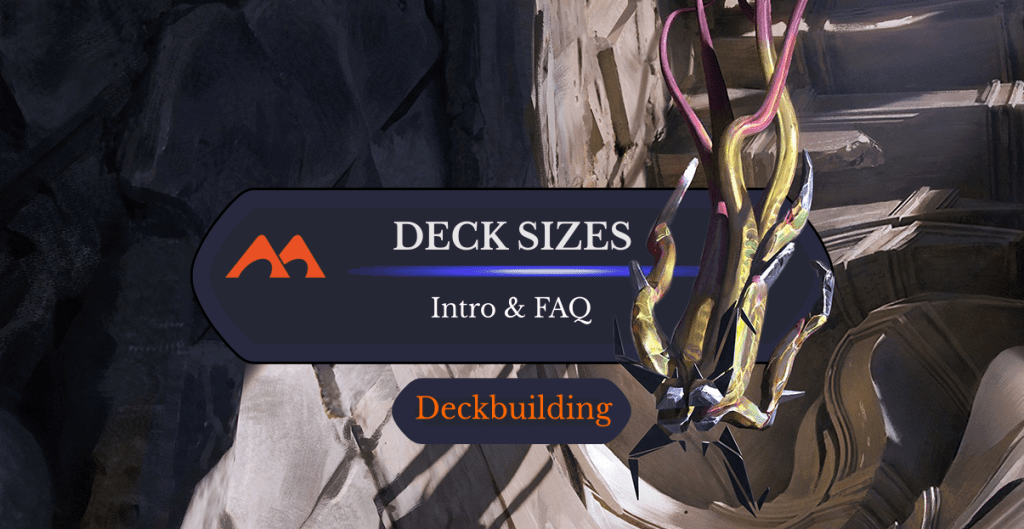
Dimensional Infiltrator | Illustration by Chase Stone
Magic is a gargantuan game with a bunch of formats to choose from when you sit down to play a game. You might be playing Standard or Modern at a local tournament, or Draft or Sealed at Friday Night Magic. You could even be sitting down at the kitchen table to run a few rounds of Commander with your buddies.
Regardless, you need to have a deck to play the game. It’s important to remember that different formats have different deck sizes. I’m here today to go over the rules when it comes to deck sizes and discuss the strategy behind deck sizes when building your decks.
Let’s get this show on the road!
What’s the Standard MTG Deck Size?

Liliana's Standard Bearer | Illustration by Josh Hass
Let’s take a look at Magic’s main format: Standard. This is the format that everybody usually gets into first thanks to its rotation and consistently smaller card pool than other Constructed formats.
The minimum deck size for the Standard format is 60 cards, and that’s all you’ll see in other players’ lists most of the time. This means that you at least have to have 60 cards in your deck, including lands, before it can legally be played in any event. That said, you can always have more. Technically you can have as many as you want (assuming you can shuffle it in your hands), but that’s a talk for another time.
When Did the “Official” Deck Size Become 60?
This is a bit of an odd topic to measure, so hear me out. The minimum deck size was 40 way back before 1994. At some point in time it became 60, but that “some point in time” was more like two points in time.
In January of 1994 the Duelists’ Convocation International was formed, and along with it came sanctioned tournaments and some rule changes. The most notable change (other than the banned and restricted list) was the official ruling that Constructed decks had to be 60 cards at minimum.
While tournaments were ruled at a 60-card minimum at this point, the rulebooks had yet to change. It wasn’t until Sixth Edition was released in April 1999 that the rulebooks also acknowledged the change to 60 cards. Up until then players had more or less adopted the tournament ruling in their own casual games. So while it wasn’t truly official outside of tournaments until 1999, it was already widely accepted before then.
What’s the Commander Deck Size?
Commander decks are an oddity in non-Limited formats, checking in at 100 cards total. It’s a different format with different rules that interacts in varying ways with MTG’s design fundamentals, so the 100-card Singleton-style deckbuilding really lets the format shine in the uniqueness of the decks that players can dream up and build.
It’s important to remember that the 100 cards also include the commander itself, which doesn’t go in your library. So your deck is effectively 99 cards (98 with partner commanders) since your commander sits in the command zone during the whole game.
What’s the Size for Decks in Draft and Sealed?
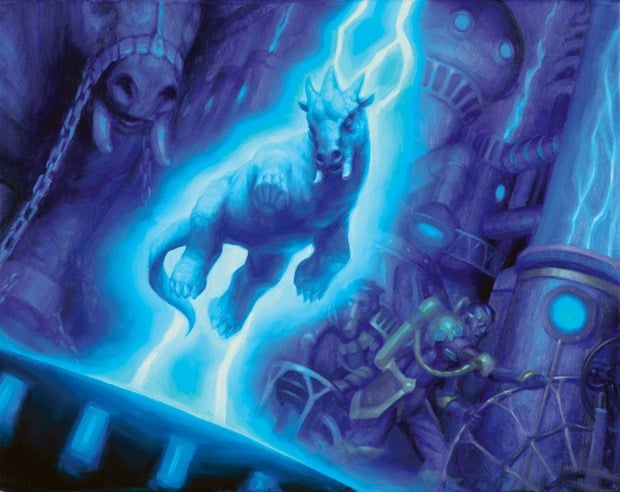
Downsize | Illustration by Ryan Pancoast
The Limited format plays differently than the Constructed formats since building the deck is part of the gameplay and the challenge that a player signs up for when they play in a Draft or Sealed event. The Limited format runs decks at a 40-card minimum since players only get so many cards to choose from when building and they don’t always have the cards they set their sights for. The lower minimum compensates for the lack of consistency in the format when building decks, allowing players to consistently play the cards they plan around without waiting forever to draw their one copy.
Limited decks are like snowflakes: no two are ever the same. They all usually have some variance to them, even if just by one card. You can check out Draftsim’s Limited Decks Twitter if you’re looking for some really cool examples of how Limited decks are built.
What Size Should a Prerelease Deck Be?
Prerelease is a Sealed format event, so it has a 40-card minimum. You can have more, but I recommend sticking as close to 40 cards as possible while aiming for a ratio of 24 playable cards to 16 lands, adjusting for your curve as you see fit.
You can even build a second deck with the cards you have left over to really bamboozle your opponents when you sideboard out one deck for another if you’re lucky with your pulls.
Are You Allowed to Play More than the Minimum Deck Size?
Simple answer: yes, yes you can play more than the minimum deck size. But whether or not you should play more than the minimum deck size is something you really need to stop and ask yourself before you do.
Should You Ever Play More than the Minimum Deck Size?
No, you generally shouldn’t play more than the minimum deck size. Think about the strongest cards in your deck. Now think about how you can only have four copies of any card with the same name in your deck at one time.
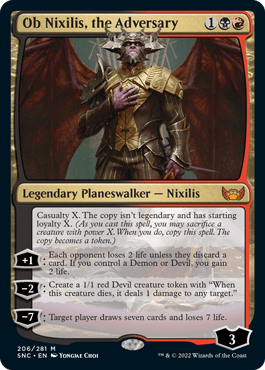
For example, you can only have four copies of Ob Nixilis, the Adversary across both your deck and your sideboard. If you play all four copies in your main board, your opening hand has a 40% chance to have one copy of the card and a 60% chance to not have any of the four copies. Every card you draw after that increases the odds that the next card you draw is Ob Nixilis.
Now add more cards to the deck. Let's say the deck starts at 70 cards. Probability and statistics rule that now you have a much lower chance to see Ob in your opening hand. And while each card you draw after that still raises the odds of seeing Ob next, they won’t raise the odds nearly as much as if your deck was built to 60 cards.
To make a long story short, you want to play at the minimum deck size and should treat it like a strict rule to follow if you want your deck to be consistent. But if you want to have fun and play something wacky then feel absolutely free to go above and beyond. Nothing is stopping you from enjoying your 200-card pile. Just be aware that players who play competitively will build the minimum requirement to raise their odds of drawing their best cards.
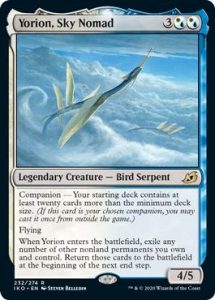
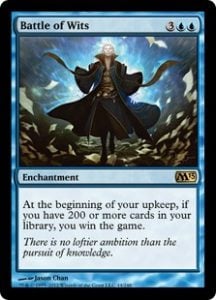
I should note, however, that there are exceptions to the rule. Yorion, Sky Nomad forces players to build at an 80-card minimum when it’s set as their companion. But cards like Battle of Wits reward you for having an absurd deck size in the hundreds. If your gameplan revolves around strategies like that then you absolutely should play more than the minimum required deck size.
What Are Some Tips to Reduce the Size of My Deck?
There are lots of ways to consider your deck size during construction.
Synergy and Strategy
The first would be to ask yourself why you want to play a certain card. If you’re sitting there saying “I want card A because it works well with card B” but it doesn’t work well with anything else and doesn’t contribute to some grand strategy, it should probably get cut. What I mean by “grand strategy” would be a mantra that your deck lives by.
“I’m a reanimator deck” means you want your deck to revive targets or be revival targets, on top of removal and card advantage. If a card is neither and serves no fundamental purpose, then you don’t need it.
Potential Interaction
Another thing to consider is the not-so-different “I want card A to deal with my opponent’s card B.” If that’s the case, put that card in your sideboard. You might need it, but not in every match.
You can also probably get away with just running one copy in the deck if you have a card you use to add a little utility or support to your strategy, or one that you use as your silver bullet against certain strategies that are more common in the metagame. You can run more in the sideboard, but you don’t need more than one to start with since it’s super situational and you’ll only likely ever need it once if at all in a game.
Drawing the Card
Next you can cut cards by ranking how much you want to see them in your opening hand or during a game.
Want to see multiples of something in your opening hand or see them often? Run four of them. Want to see something often but only one in your opening hands? Run three copies. Want to see something occasionally but only once in a game, maybe twice if it runs long? Run two copies. Spare utility and silver bullets get one copy.
Playtesting
And if you’re still struggling to cut those last three to five cards at the end of it all, just playtest. Sure your consistency is a little off, but this is to decide whether or not certain cards contribute the way you want them to when you do see them.
You just need to test and test and test some more to feel out what works and what doesn’t. You’ll get the hang of it, I promise.
Is There a Maximum Deck Size Limit?
There isn’t a numerical deck size limit. Go wild, my friend.
The only limit on the deck size is that you have to be able to shuffle it on your own without assistance, and that your sideboard can be no larger than 15 cards. Other than that, the sky's the limit. Build that 300 card Battle of Wits deck. Who’s going to stop you?
Is There a Maximum Deck Size in MTG Arena?
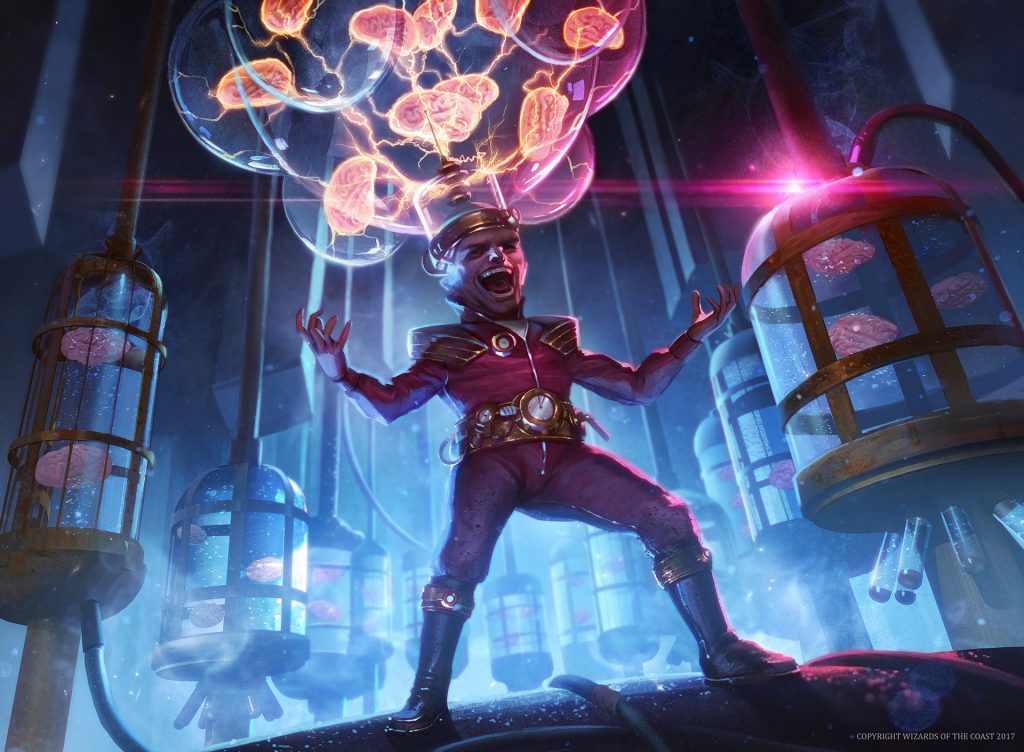
The Big Idea (Unstable) | Illustration by Bram Sel
If a deck has more than 250 cards, MTGA will refuse to save the deck. So the maximum deck size on Arena stands at 250. This is mostly done because the game renders the visual of the deck in-game to a size dependent on the number of cards in it.
When there wasn’t a limit in beta, you could stack cards so high that it went off screen and parts of the game board would be visually blocked. The upper limit was then (reasonably) introduced.
What’s the Maximum Deck Size in Shandalar?
The maximum deck size in Shandalar appears to have been 500. Oddly, there wasn’t actually a deck minimum if you don’t count being required to have a deck as being the lower limit. You could run one card, or you could run 500. A large range, but it’s up to you.
This varies depending on deck size. The limit in Shandalar started at one copy of each card in a deck of 1 to 19 cards, and the limit increased by one for each 10 cards in a deck after that. This means that you could have four copies of each card in your deck once you got up to 60 cards in a deck.
But if you had the Tome of Knowledge then the limit was increased by one at all levels. This means you could run two copies of a card in decks sized from 1 to 20, while decks at 60 cards or more could run unlimited copies of any given card. It’s a little wild. Just a little bit.
How Many of Each Card Should be in an MTG Deck?

Body Count | Illustration by Vladimir Krisetskiy
The maximum number of copies you can have of a unique card in a Constructed deck is four. Basic lands don’t count for this and can be as abundant as you desire, but unique lands like Breeding Pool also have a 4-copy limit. If you’re playing a card that’s restricted, then you can only have as many copies as the restriction dictates.
For a ratio on how many of each card type to include in a deck, you’re looking at about 36 playables like creatures and spells to 24 lands. Of those 36 playables you should split it down the middle between creatures and spells.
There are different play styles and you should adjust these numbers to better suit your goal. Some decks bump it up to 26 lands while others knock it down to 19 depending on how large their curve is, but the safe starting point is 24 lands which is often the average in Constructed decks.
What Percentage of My Deck Should Be Lands?
Roughly 40% of your deck should be lands. You can adjust this number as needed, but 40% should be what you run in any given scenario, regardless of the format. That’s 24 lands in Constructed formats, and in Limited formats that’s 16 lands if you’re adhering to the minimum. You’re looking at 40 lands in Commander, but you can easily cut it down to 38 to sneak in another fun card or two.
These numbers change a little bit across the board whenever you run different play styles. Ramp and control strategies tend to need more land on the field to play out bigger spells for various reasons, and they’ll usually move up to a 43% to 45% range of lands for higher draw consistency and more to grab with their ramp spells. But aggro runs a lower curve and doesn’t need as many lands, so they can afford to cut down to as low as 33% since they’ll usually never play anything that costs more than three or four mana.
Wrapping Up the Competition

Angel of Finality | Illustration by Howard Lyon
And there you have it, folks! Hopefully this cleared up some questions y’all had about deck size. Do you have any particularly odd way you like to play with a large card count, or are you a competitive person looking to cut all corners to get the best advantage? Let me know in the comments below or join the discussion in Draftsim’s Discord.
It’s been a good time with y’all today. Stay safe, and I’ll see you back here in the next one!
Follow Draftsim for awesome articles and set updates: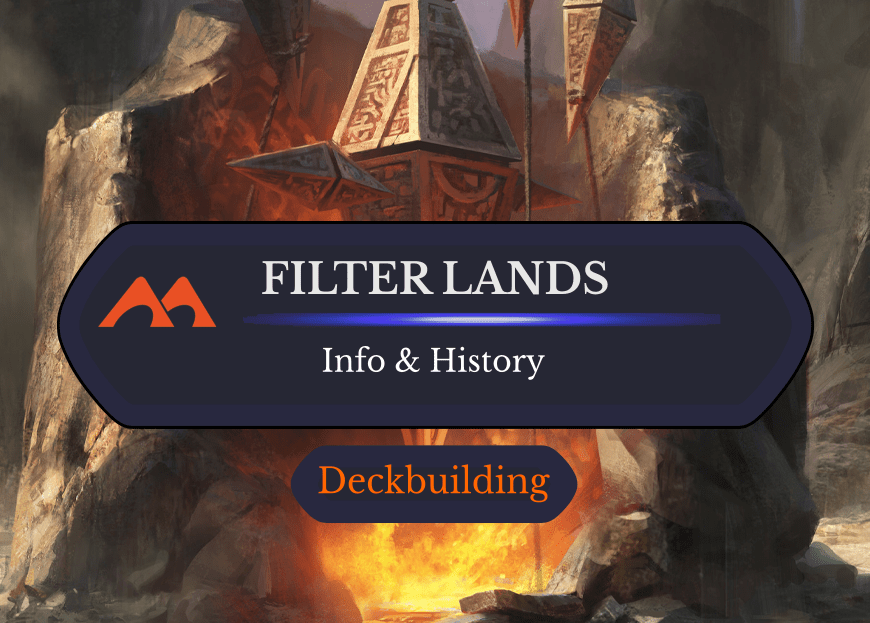
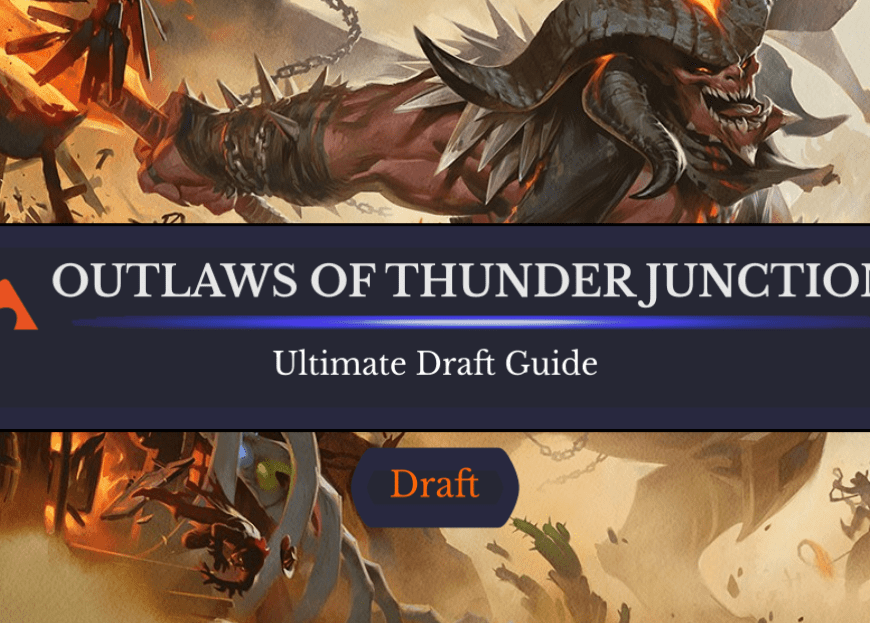
2 Comments
Thanks for article. I have been enjoying a 2020 BlueBlack rogue commander deck, (Anowon Ruin Thief). Then recently learned of a prior year’s Dimir Rogues deck also in BlueBlack.
At first I thought why buy another “duplicate” Rogue deck? But now I’ve an idea… since each deck shares similar card synergies and win conditions I may just mix the two with this article’s blessing!!
(Removing duplicate cards of course).
“Rogues Descend!!”
PS: now if I can just win against my pet cats one day… they play Feline themes and I lose every time.
Haha nothing wrong with that. As long as it’s 100 cards!
Add Comment